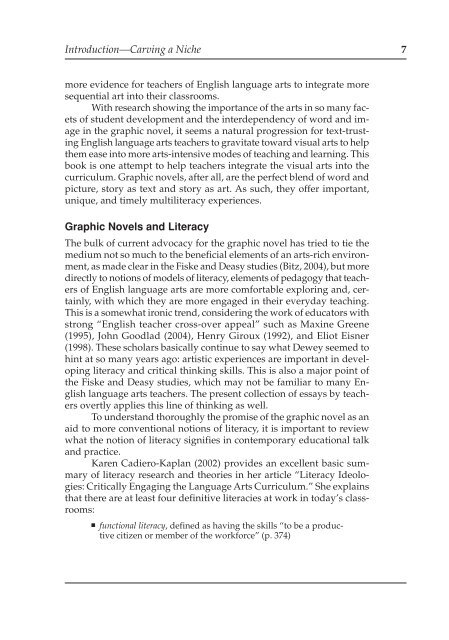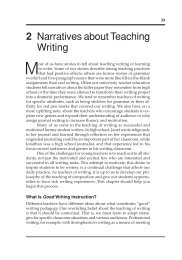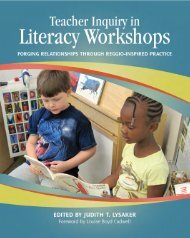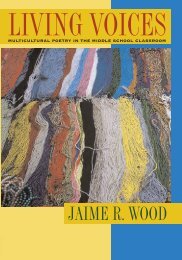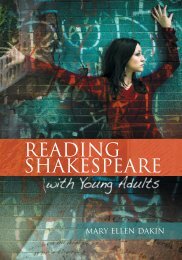Graphic novel Spread - National Council of Teachers of English
Graphic novel Spread - National Council of Teachers of English
Graphic novel Spread - National Council of Teachers of English
- No tags were found...
Create successful ePaper yourself
Turn your PDF publications into a flip-book with our unique Google optimized e-Paper software.
Introduction—Carving a Niche 7<br />
more evidence for teachers <strong>of</strong> <strong>English</strong> language arts to integrate more<br />
sequential art into their classrooms.<br />
With research showing the importance <strong>of</strong> the arts in so many facets<br />
<strong>of</strong> student development and the interdependency <strong>of</strong> word and image<br />
in the graphic <strong>novel</strong>, it seems a natural progression for text-trusting<br />
<strong>English</strong> language arts teachers to gravitate toward visual arts to help<br />
them ease into more arts-intensive modes <strong>of</strong> teaching and learning. This<br />
book is one attempt to help teachers integrate the visual arts into the<br />
curriculum. <strong>Graphic</strong> <strong>novel</strong>s, after all, are the perfect blend <strong>of</strong> word and<br />
picture, story as text and story as art. As such, they <strong>of</strong>fer important,<br />
unique, and timely multiliteracy experiences.<br />
<strong>Graphic</strong> Novels and Literacy<br />
The bulk <strong>of</strong> current advocacy for the graphic <strong>novel</strong> has tried to tie the<br />
medium not so much to the beneficial elements <strong>of</strong> an arts-rich environment,<br />
as made clear in the Fiske and Deasy studies (Bitz, 2004), but more<br />
directly to notions <strong>of</strong> models <strong>of</strong> literacy, elements <strong>of</strong> pedagogy that teachers<br />
<strong>of</strong> <strong>English</strong> language arts are more comfortable exploring and, certainly,<br />
with which they are more engaged in their everyday teaching.<br />
This is a somewhat ironic trend, considering the work <strong>of</strong> educators with<br />
strong “<strong>English</strong> teacher cross-over appeal” such as Maxine Greene<br />
(1995), John Goodlad (2004), Henry Giroux (1992), and Eliot Eisner<br />
(1998). These scholars basically continue to say what Dewey seemed to<br />
hint at so many years ago: artistic experiences are important in developing<br />
literacy and critical thinking skills. This is also a major point <strong>of</strong><br />
the Fiske and Deasy studies, which may not be familiar to many <strong>English</strong><br />
language arts teachers. The present collection <strong>of</strong> essays by teachers<br />
overtly applies this line <strong>of</strong> thinking as well.<br />
To understand thoroughly the promise <strong>of</strong> the graphic <strong>novel</strong> as an<br />
aid to more conventional notions <strong>of</strong> literacy, it is important to review<br />
what the notion <strong>of</strong> literacy signifies in contemporary educational talk<br />
and practice.<br />
Karen Cadiero-Kaplan (2002) provides an excellent basic summary<br />
<strong>of</strong> literacy research and theories in her article “Literacy Ideologies:<br />
Critically Engaging the Language Arts Curriculum.” She explains<br />
that there are at least four definitive literacies at work in today’s classrooms:<br />
functional literacy, defined as having the skills “to be a productive<br />
citizen or member <strong>of</strong> the workforce” (p. 374)


